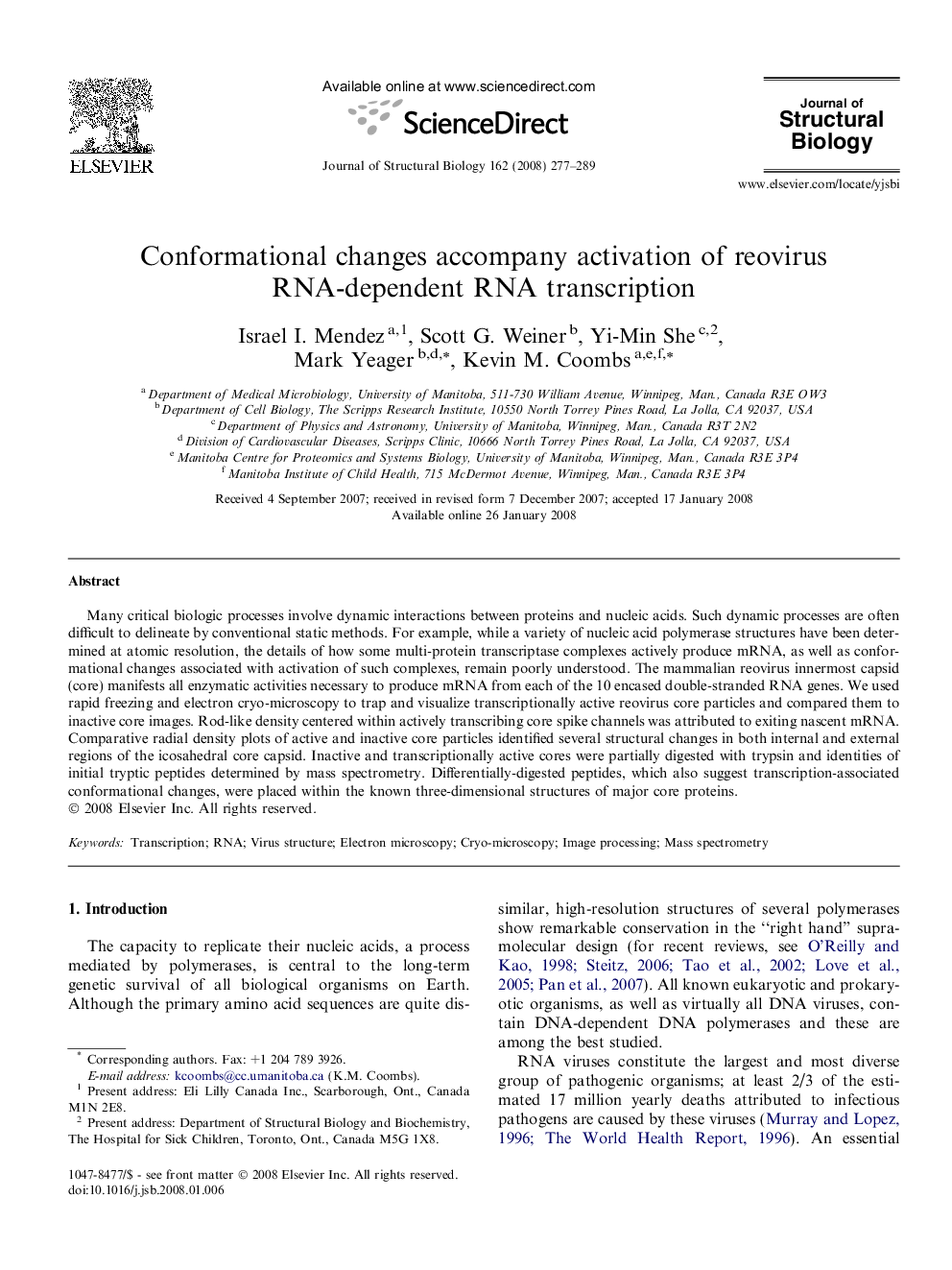| Article ID | Journal | Published Year | Pages | File Type |
|---|---|---|---|---|
| 2829206 | Journal of Structural Biology | 2008 | 13 Pages |
Abstract
Many critical biologic processes involve dynamic interactions between proteins and nucleic acids. Such dynamic processes are often difficult to delineate by conventional static methods. For example, while a variety of nucleic acid polymerase structures have been determined at atomic resolution, the details of how some multi-protein transcriptase complexes actively produce mRNA, as well as conformational changes associated with activation of such complexes, remain poorly understood. The mammalian reovirus innermost capsid (core) manifests all enzymatic activities necessary to produce mRNA from each of the 10 encased double-stranded RNA genes. We used rapid freezing and electron cryo-microscopy to trap and visualize transcriptionally active reovirus core particles and compared them to inactive core images. Rod-like density centered within actively transcribing core spike channels was attributed to exiting nascent mRNA. Comparative radial density plots of active and inactive core particles identified several structural changes in both internal and external regions of the icosahedral core capsid. Inactive and transcriptionally active cores were partially digested with trypsin and identities of initial tryptic peptides determined by mass spectrometry. Differentially-digested peptides, which also suggest transcription-associated conformational changes, were placed within the known three-dimensional structures of major core proteins.
Keywords
Related Topics
Life Sciences
Biochemistry, Genetics and Molecular Biology
Molecular Biology
Authors
Israel I. Mendez, Scott G. Weiner, Yi-Min She, Mark Yeager, Kevin M. Coombs,
